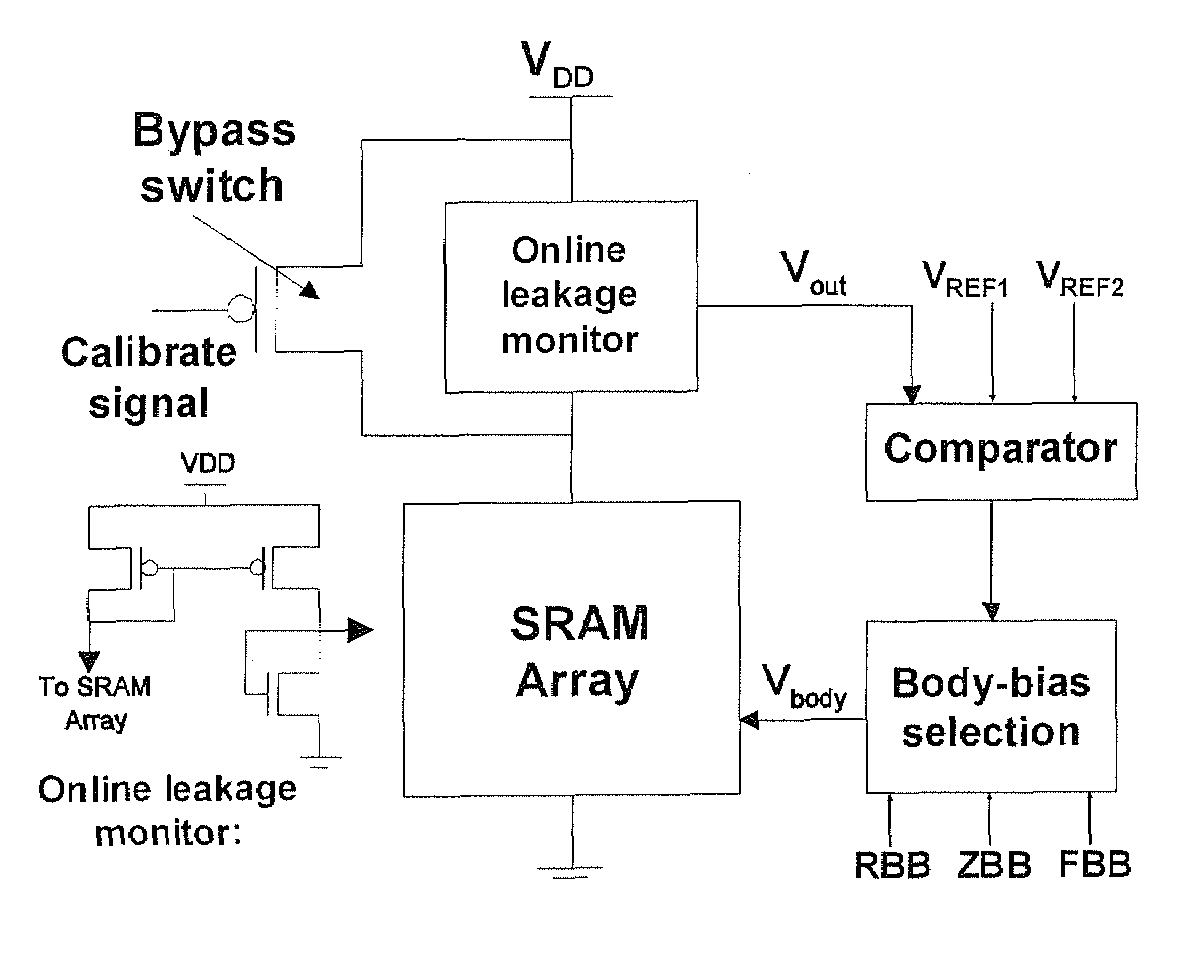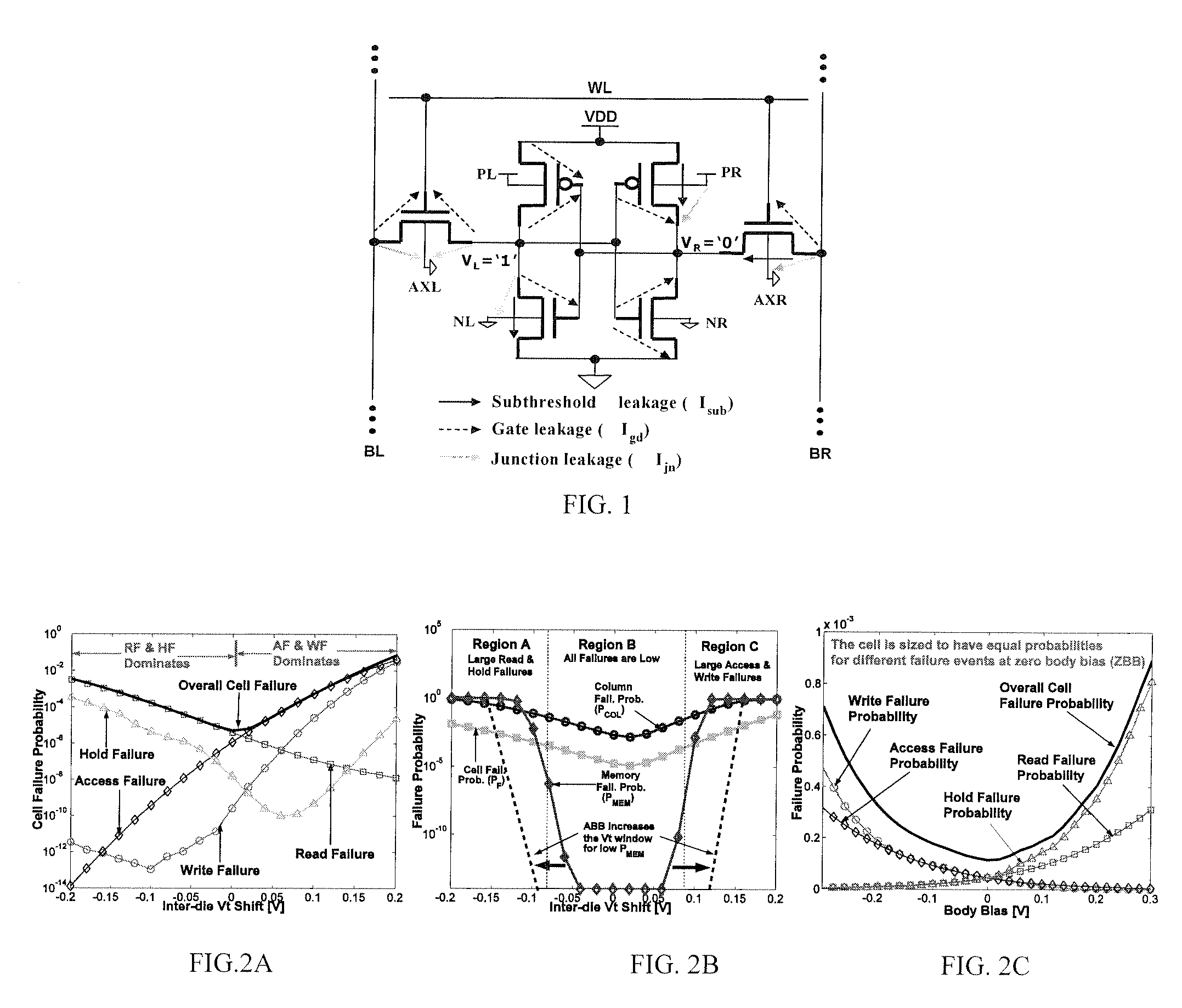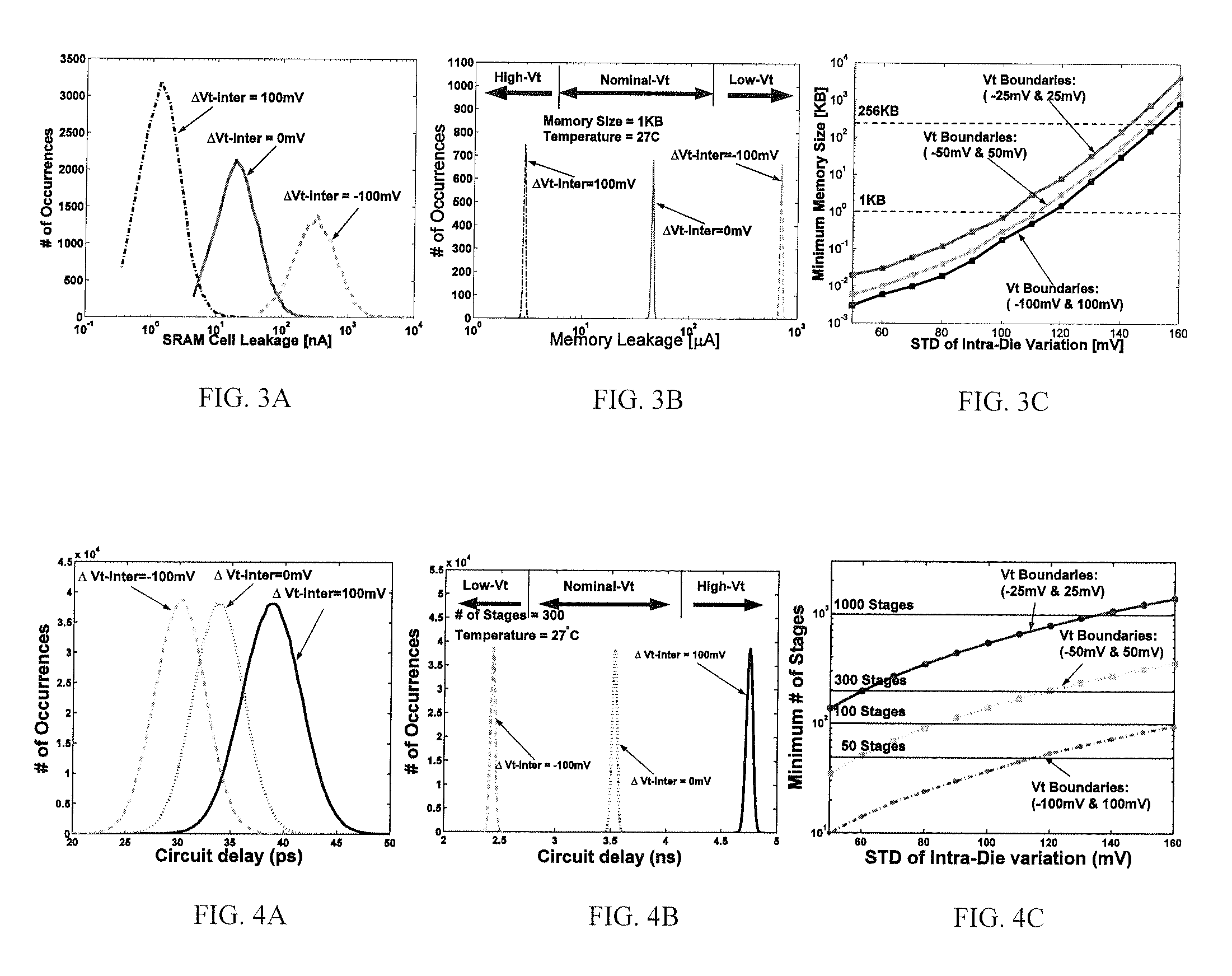Self-repairing technique in nano-scale SRAM to reduce parametric failures
a nano-scale sram and parametric technology, applied in static storage, information storage, digital storage, etc., can solve the problems of more failures, functional failures, and lower yield, and achieve the effect of reducing sram failures and improving yield
- Summary
- Abstract
- Description
- Claims
- Application Information
AI Technical Summary
Benefits of technology
Problems solved by technology
Method used
Image
Examples
Embodiment Construction
[0025]For the purpose of promoting an understanding of the principles of the invention, reference will now be made to the embodiments illustrated in the drawings and specific language will be used to describe the same. It will nevertheless be understood that no limitation of the scope of the invention is thereby intended, such alterations and further modifications in the illustrated device and such further applications of the principles of the invention as illustrated therein being contemplated as would normally occur to one skilled in the art to which the invention relates.
[0026]A preferred embodiment of the present invention is a self-repairing technique in SRAM that uses Adaptive Body Bias (ABB) to reduce read / hold failures in low-Vt dies and access / write failures in high-Vt dies and thereby considerably improve yield. Application of Reverse-Body-Bias (RBB) in low-Vt dies increases their Vt thereby reducing possible read / hold failures in SRAM cells. Similarly, application of Forw...
PUM
 Login to View More
Login to View More Abstract
Description
Claims
Application Information
 Login to View More
Login to View More - R&D
- Intellectual Property
- Life Sciences
- Materials
- Tech Scout
- Unparalleled Data Quality
- Higher Quality Content
- 60% Fewer Hallucinations
Browse by: Latest US Patents, China's latest patents, Technical Efficacy Thesaurus, Application Domain, Technology Topic, Popular Technical Reports.
© 2025 PatSnap. All rights reserved.Legal|Privacy policy|Modern Slavery Act Transparency Statement|Sitemap|About US| Contact US: help@patsnap.com



